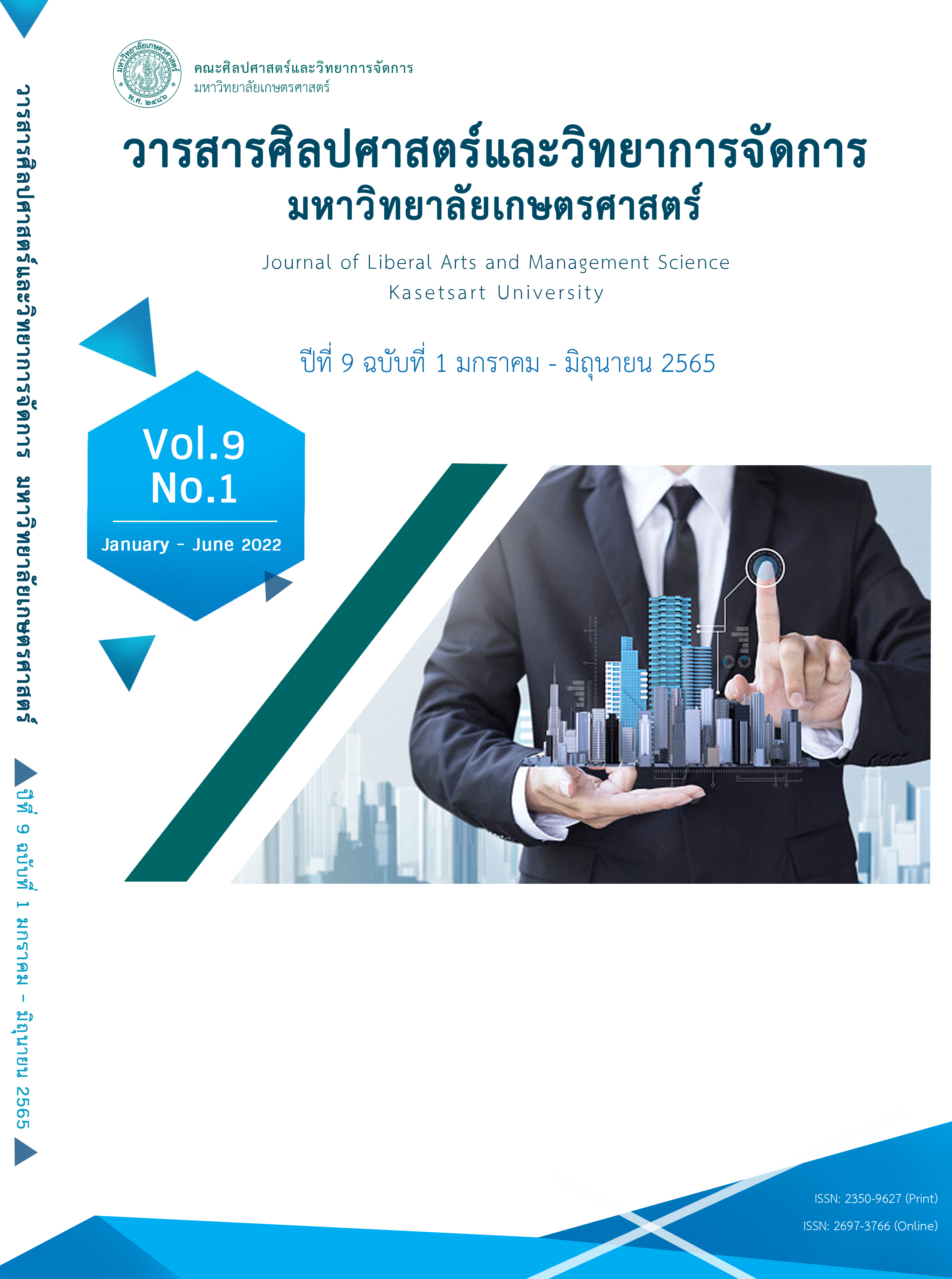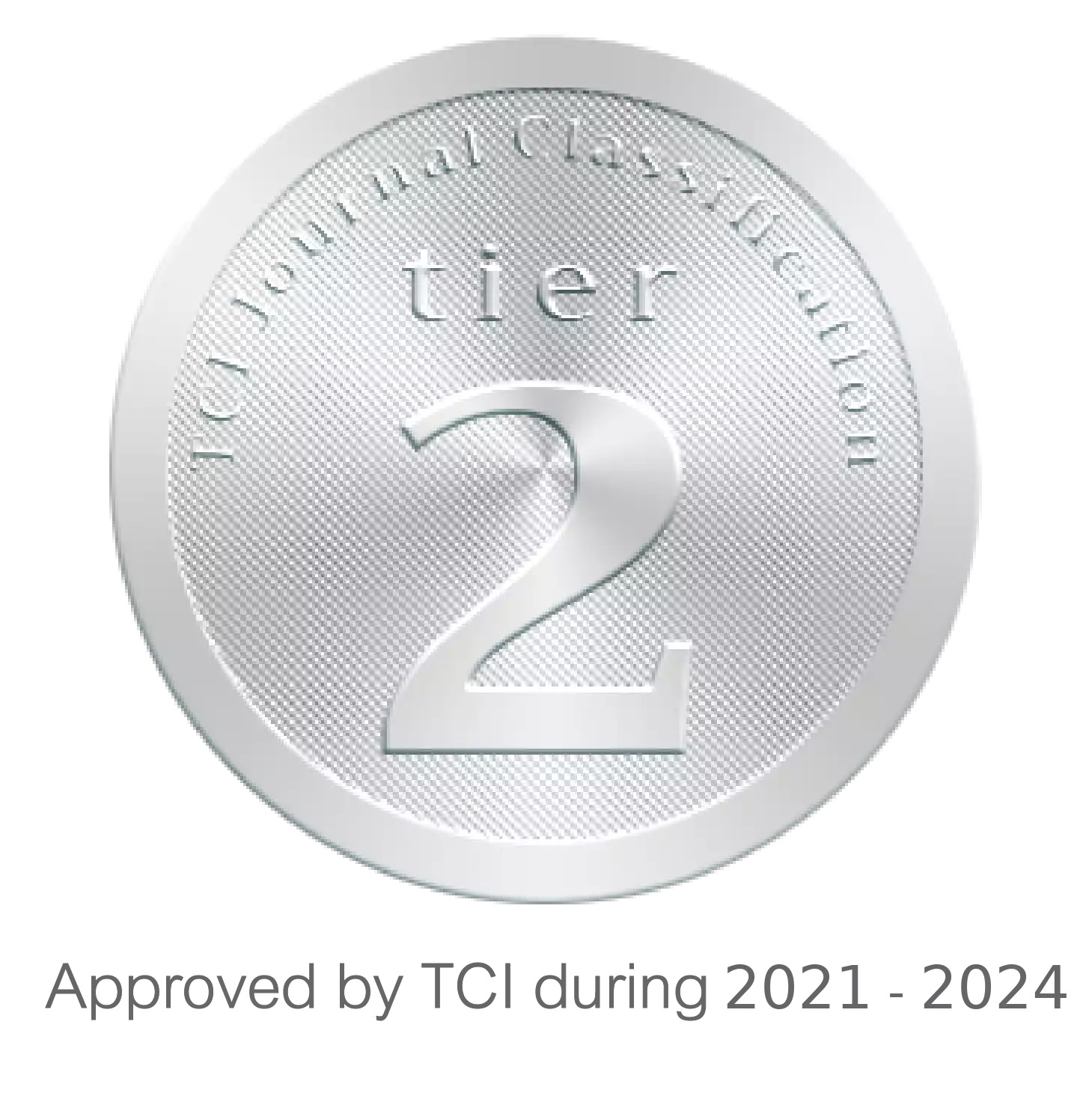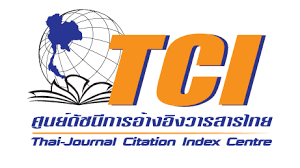The Model of Business Tourism in Area of Eastern Economic Corridor (EEC)
Keywords:
Business Tourism, Eastern Economic Corridor, Millennial TouristAbstract
This article is to inform investors and entrepreneurs about the business tourism strategy for the Eastern Economic Corridor (EEC) by identifying features of tourists capable of segmenting the business tourist market and defining marketing objectives. According to the survey, MICE enterprises, also the development and promotion of tourism in order to transform the Eastern Economic Corridor’s tourist industry into one of world-class sustainability are the most significant tourist types that create the majority of the region's revenue. Government agencies have made investments in the large auditorium business, the International Exhibition Center, and health-oriented tourism development to support quality tourists, as well as investments in infrastructure and logistics development for the eastern region to support Bangkok's growth, such as the high-speed rail project connecting three airports and the double-track railway development of U-Tapao Airport, etcetera. In addition, in support of promoting business tourism to specific populations, Plans call for the development of tourism sites and infrastructure to serve Bleisure visitors, who, according to the survey, are millennials. This group's conduct has a significant impact on the demand and supply of the tourism sector, particularly corporate tourism.
Downloads
References
เขมรัฐ เสริมสมบูรณ์ และประหัสชัย ระมาศ. (2564). แนวทางการพัฒนาการตลาดการท่องเที่ยวเชิงวัฒนธรรมเพื่อรองรับเขตพัฒนาพิเศษภาคตะวันออก (EEC) กรณีศึกษา: ตลาดบ้านใหม่ จังหวัดฉะเชิงเทรา. การประชุมวิชาการระดับชาติ ปอมท.ประจำปี 2564, 18-19 พฤศจิกายน 2564. สำนักบริการวิชาการ มหาวิทยาลัยเชียงใหม่. เชียงใหม่.
จุฑาพร บุญคีรีรัฐ และณัฐภาณี จริตไทย. (2563). การเปลี่ยนแปลงรูปแบบการท่องเที่ยวกับเทคโนโลยีสารสนเทศบนโลกดิจิทัล. วารสารปัญญาภิวัฒน์, 12(2), 285-301.
จุฑาพร บุญคีรีรัฐ และณัฐภาณี จริตไทย. (2563). บทบาทของรัฐในการพัฒนาประเทศให้เป็นมหานครไมซ์แห่งเอเชีย: กรณีศึกษาไทยกับมาเลเซียภายใต้บริบทนักท่องเที่ยวกลุ่มมิลเลนเนียล. วารสารสุโขทัยธรรมาธิราช, 33(1), 123-148.
จุฬณี ตันติกุลานันท์. (2563). บทบาทของรัฐในการพัฒนาประเทศให้เป็นมหานครไมซ์ (MICE) แห่งเอเชีย: กรณีศึกษาไทยกับมาเลเซียภายใต้บริบทนักท่องเที่ยวกลุ่มมิลเลนเนียล. วารสารสุโขทัยธรร มาธิราช, 33(1), 123-148.
วัชรพล พิสารเขตร. (2564). การศึกษาปัจจัยที่ส่งผลต่อความตั้งใจกลับไปท่องเที่ยวซ้ำในการท่องเที่ยวเชิงส่งเสริมสุขภาพของพื้นที่ภาคใต้ประเทศไทย (สารนิพนธ์การจัดการมหาบัณฑิต), มหาวิทยาลัยมหิดล, กรุงเทพฯ.
วีรยา อิทธิพัฒน์ภาคิน และอานนท์ ทับเที่ยง. (2562). การศึกษาทัศนคติในมุมมองของพนักงานที่มีผลต่อการทำงานจากที่บ้าน (รายงานวิจัย). มหาวิทยาลัยเทคโนโลยีพระจอมเกล้าธนบุรี, กรุงเทพฯ.
ศรวัลย์ สมสวัสดิ์ และชนมะณี ทะนันแปง. (2563). ความอยู่รอดของอุตสาหกรรมไมซ์ Meeting, Incentive, Conventions, Exhibitions (MICE) ในยุคโควิด-19. วารสารนวัตกรรมและการจัดการ, 5(ฉบับเพิ่มเติม), 129-145.
สำนักงานคณะกรรมการนโยบายเขตพัฒนาพิเศษภาคตะวันออก. (2561). แผนปฏิบัติการการพัฒนาและส่งเสริมการท่องเที่ยวในเขตพัฒนาพิเศษภาคตะวันออก. สืบค้นเมื่อ 10 กุมภาพันธ์ 2565, จาก https://www.eeco.or.th/web-upload/filecenter/untitled%20folder/EEC010.pdf.
สำนักงานคณะกรรมการนโยบายเขตพัฒนาพิเศษภาคตะวันออก. (2561). แผนภาพรวมเพื่อการพัฒนาเขตพัฒนาพิเศษภาคตะวันออก พ.ศ.2560–2565. สืบค้นเมื่อ 5 กุมภาพันธ์ 2565, จาก https://eeco.or.th/web- upload/filecenter/untitled%20folder/eec001-2.pdf.
สำนักงานคณะกรรมการส่งเสริมการลงทุน. (2560). คู่มือการลงทุนในพื้นที่ระเบียงเศรษฐกิจพิเศษภาคตะวันออก. สืบค้นเมื่อ 1 กุมภาพันธ์ 2565, จาก https://www.boi.go.th/upload/content/BOI-EEC%20announcement-20170517_33689.pdf.
สำนักงานคณะกรรมการส่งเสริมการลงทุน. (2564). คู่มือการขอรับการส่งเสริมการลงทุน 2564. สืบค้นเมื่อ 5 กุมภาพันธ์ 2565, จาก https://www.boi.go.th/upload/content/BOI_A_ Guide_Web_Th.pdf.
สำนักงานสภาการพัฒนาเศรษฐกิจและสังคมแห่งชาติ. (2564). ผลิตภัณฑ์ภาคและจังหวัดแบบปริมาณ ลูกโซ่ฉบับ พ.ศ. 2562. สืบค้นเมื่อ 1 กุมภาพันธ์ 2565, จาก https://www.nesdc.go.th /ewt_dl_link.php?nid=11539& filename=gross_regional.
อธิป จันทร์สุริย์. (2564). Hotel+Hospital=Hospitel: กลยุทธ์การปรับตัวของธุรกิจโรงแรมภายใต้สถานการณ์โรคระบาด COVID-19. วารสารศิลปศาสตร์และวิทยาการจัดการ, 8(2), 114-131.
Buhalis, D. (2000). Marketing the competitive destination of the future. Tourism management, 21(1), 97-116.
Caicedo-Barreth, A., Pavón, E. S., & Santos, L. L. (2020). Competitiveness of Guayaquil towards bleisure tourism. European Journal of Tourism, Hospitality and Recreation, 10(2), 118-133.
Ketter, E. (2020). Millennial travel: tourism micro-trends of European Generation Y. Journal of Tourism Futures, 7(2), 192-196.
Kotler, Philip. (2003). Marketing Management (11th ed). Upper Saddle River, NJ: Prentice Hall.
Lichy, J., & McLeay, F. (2018). Bleisure: motivations and typologies. Journal of Travel & Tourism Marketing, 35(4), 517-530.
Marques, J., & Santos, N. (2016). Developing business tourism beyond major urban centres: the perspectives of local stakeholders. Tourism and hospitality management, 22(1), 1-15.
Sa’aban, S., Ismail, N., & Mansor, M. F. (2013). A study on generation y behavior at workplace. In International Conference on Business Innovation, Entrepreneurship and Engineering (Vol. 549), pp. 548-554.









